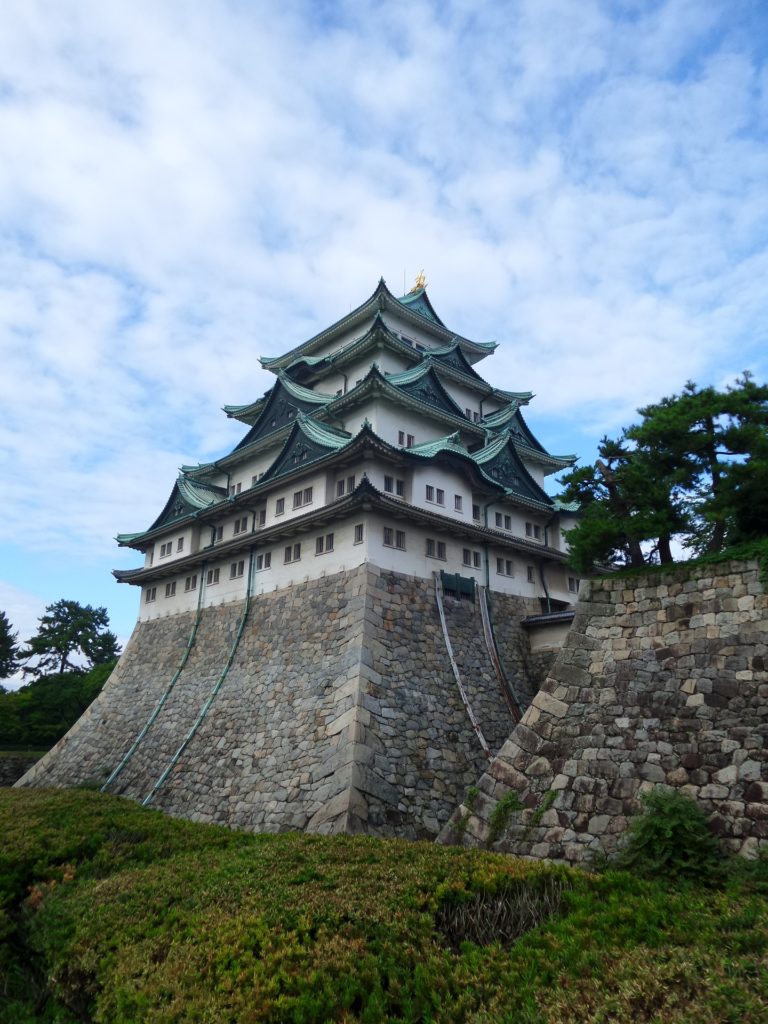Situated in the heart of Honshu island, Nagoya is a large Japanese metropolis with a rich history and culture, and one of Japan’s most important industrial and modern cities today.
The birthplace of three of the country’s most powerful and influential feudal lords (Tokugawa Ieyasu, Toyotomi Hideyoshi, and Oda Nobunaga), Nagoya was founded as a castle town during the Edo Period. Today, it is home to more than two million people, and has thriving ceramics and textiles, aviation, machinery, and automobile industries.
How To Get There
Nagoya is accessible via plane, train, and bus.
There are two airports found in the city. The first one is the Nagoya Airfield, formerly known as Komaki Airport, and currently serves Fuji Dream Airlines, which offers flights to and from Aomori, Yamagata, Fukuoka, Izumo, Kumamoto, Niigata, Hanamazaki, Kitakyushu, Izumo, and Kochi; and the second one is the Chubu Centrair International Airport, which serves numerous international and domestic flights of several airline companies, including Lufthansa, Jeju Air, Singapore Airlines, United Airlines, Philippine Airlines, Finnair, China Airlines, AirAsia Japan, Air Do, All Nippon Airways, and Skymark Airlines.
By train, Nagoya is accessible from Tokyo, Kyoto, and Osaka through the JR Tokaido Shinkansen. The one-way ride between Nagoya Station and Tokyo Station takes approximately 100 minutes, while the travel from either Kyoto or Osaka takes less than an hour.
There are also daytime and overnight highway buses that depart from Tokyo and go to Nagoya multiple times a day. The one-way trip is about five to six hours long.
Top Attractions
SCMAGLEV and Railway Park
Launched in 2011 by the Central Japan Railways (or JR Central), the SCMAGLEV and Railway Park is an educational and interactive museum that aims to teach and inform guests on the beginnings and progress of high speed rail technology in Japan through the years.
With 39 retired trains on display, train simulators, miniature train tracks, train dioramas, and various other exhibits, the museum is a paradise for train enthusiasts of all ages.
To get there, take the Aonami Line from Nagoya Station to Kinjofuto Station, where the museum is just a few minutes’ walk away.
More information on the SCMAGLEV and Railway Park is found on their official website.
Nagoya Castle

Built in the early 1600s, Nagoya Castle is an important historical landmark of Nagoya. It served as the seat of the Owari branch of the Tokugawa clan during the Edo Period. Over the years, it has undergone a number of reconstructions, most particularly after it was destroyed in an air raid during World War II. Today, much of the castle and the grounds have been rebuilt and are a popular destination during peak cherry blossoms season.
You can visit Nagoya Castle’s official website for more information.
Toyota Factory Tour
The Toyota Headquarters are found in Nagoya, and they offer plant factory tours for free. If you want to include this activity to your itinerary, you must reserve a slot in advance through the Toyota Plant Tour reservation page.
In addition, the city also has three Toyota museums that house a wide selection of Toyota car and truck models from the automobile giant’s early beginnings up to this day, as well as various vintage American and European models.
Opening hours, tickets, and access information are available on their respective websites: Toyota Kaikan Museum, Toyota Commemorative Museum of Industry and Technology, and Toyota Automobile Museum.
Korankei
If visiting Nagoya in autumn, make sure to drop by Korankei, a beautiful valley known for its magnificent autumn foliage, located on the outskirts of Nagoya.
Home to numerous maple trees that turn bright red and orange during peak fall season, it also has a 17th century temple, the Kojakuji Temple, which stands atop the towering Mount Iimori; the gorgeous red-coloured Taigetsukyo Bridge that stretches across Tomoe River; and the Sanshu Asuke Yashiki Village, a small, attractive village with traditional Japanese shops that offer handmade bamboo baskets, washi paper postcards, indigo dyed hankies, straw sandals, and other local handicrafts.
Information on transportation, events, and shops are available on Sanshu Asuke Yashiki’s official website.
Atsuta Shrine
An important Shinto Shrine dedicated to the Sun Goddess Amaterasu, Atsuta Shrine is an ancient shrine believed to have been founded around the early 8th century. Its grounds sit on 200,000 square meters of land, and include several buildings and gardens.
It is easily accessible via train and subway, and is located a short walk away from Jingumae Station, Jingunishi Station, and Atsuta Station.
Learn more about its history on Atsuta Shrine’s official website.
Tokugawa Art Museum
The Tokugawa Art Museum houses some of the best treasures of the Tokugawa clan. It has ancient maps, scrolls, swords, samurai armour, noh masks, tea utensils, and traditional Japanese clothing and costumes preserved and on display.
Outside, there is a spacious Japanese landscape garden that offers walking trails, tea houses, flower and tree gardens, bridges, and a large central pond. It is among the city’s top sakura and autumn foliage spot every April and November each year.
To get there, take a train to Ozone Station, which is only a 10-minute walk from the museum.
Operating hours, tickets, and other information are found on Tokugawa Art Museum’s official website.
Getting Around
Nagoya has a reliable railway and bus system. Many of the city’s most popular attractions are situated a stone’s throw away from the train and subway stations and bus stops, so getting from one site to another should not be an issue.
In addition, the city has a special sightseeing loop bus, known as the Meguru loop bus, which provides an economical and convenient way to access the city’s top tourist spots. For only 500 yen, you can get a Meguru Nagoya Sightseeing Route Bus One-Day Pass and enjoy unlimited rides on the loop bus. Read more about the special offer here.
Weather
Nagoya summers are quite hot and humid, with daily temperatures around 30 degrees Celsius, and see a lot of rain, with the months of June and September getting the most rainfall each year. But, in the autumn and spring seasons, temperatures drop to below 20, with some rainy days here and there. In winter, the temperatures dip to about 5 degrees, and are generally dry, with extremely small chances of snowing.
